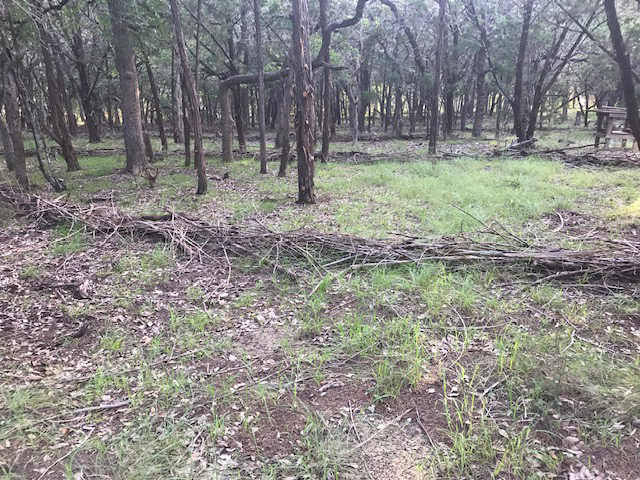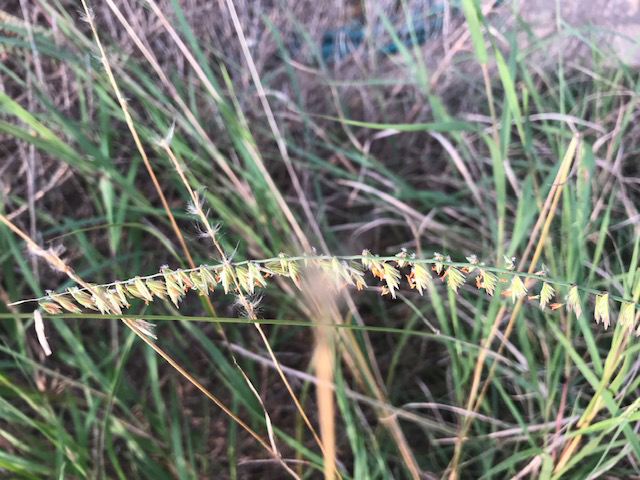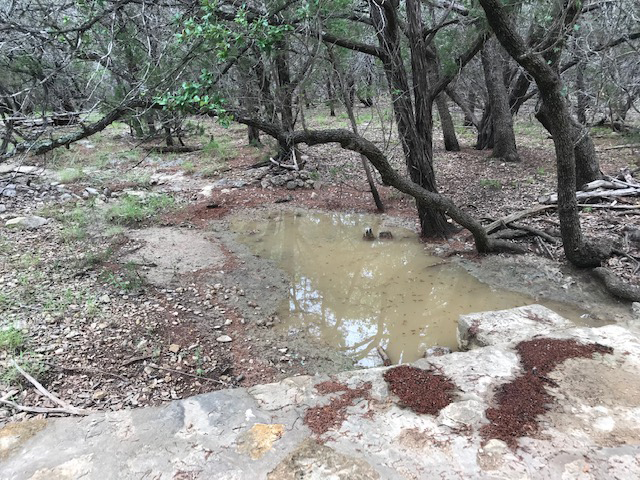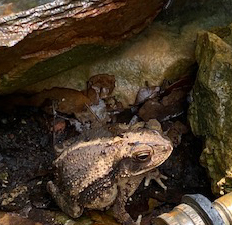
Dead Ashe Juniper branches are laid on the ground to create berms on contour for erosion control. The canopy above is still thickly intact. Light is allowed to reach the ground and grass is beginning to fill in around tree trunks between stick and rock berms.

Sideoats Grama Grass
Posted in
Habitat, Erosion, 2021

Water from recent rain still standing in The Draw because of rock gabion dam installed years ago.
There is a culvert installed under the stone covered road to allow traffic to pass in wet events.
Posted in
Habitat, Erosion, 2021
-
2 inches of rain measured. The rainiest summer caretakers have ever seen.

The Man-made rock pond full of water after rains. It is designed so that water in the draw flows around the edge of the main body of water in the pond. There is a float valve connected to a water hose from the water well to keep the pond full of water year round.
Posted in
Habitat, 2021

Young Raccoon Kit at feed bowl on porch with Sunflower seeds and Nut'n'Berry mix.
The photo is taken from inside the house through a screen erected on window to prevent bird strikes.
Posted in
2021

Gulf Coast Toad taking advantage of a leaky faucet. Caretakers leave water leaks to support willdife.
Posted in
Census, 2021






